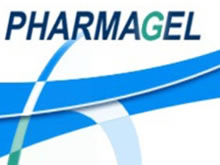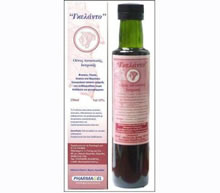
Λεξικό .. C1-esterase inhibitor (C1-INH)
C1-INH is an α2 globulin present in serum. It inhibits the initial activation steps of the classical pathway of complement, the coagulation and the kinin systems, as well as of fibrinolysis. There are hereditary and acquired functional deficiency of C1-INH which are the cause of hereditary or acquired angioneurotic edema. The hereditary forms of functional deficiency of C1-INH can be associated with insufficient production of C1-INH molecules (type I) or functional deficient C1-INH (type II or III of hereditary angioneurotic edema, HAE) [1]. Acquired forms of C1-INH deficiency, in contrast to the inherited forms, are characterized by a) Normal or even increased synthesis of C1-INH, which the levels are low due to an increased catabolism [2]. b) C1-INH deficiency due to autoantibody (anti-C1-INH) formation. [3]. Acquired angioneurotic edema was described to be associated with lymphoproliferative diseases, with few exceptions [4]. C1-INH is synthesized mainly in the liver but also in monocytes.
The synthesis of C1-INH can be influenced by anabolic steroids (e.g. danazol or stanozolol which can induce a 20% increase of C1-INH levels). . (See Stanozolol, angioneurotic edema). Hereditary angioedema (HAE) is often debilitating with a serious effect on quality of life (QOL). Treatment of acute HAE attacks is usually with C1 esterase inhibitor (C1-INH) concentrates; however, treatment can be delayed by patients' travel time for attending emergency units. Self-administration of C1-INH improved QOL on both physical and psychological parameters. Patients were able to resume a normal life without restrictions caused by the condition. Self-administration of C1-INH improved QOL on both physical and psychological parameters. Patients were able to resume a normal life without restrictions caused by the condition [5]. C1-INH concentrate appears to be a very safe and effective treatment option for HAE.
1. Al-Abdulah IH, Creally J: C1-inhibitor-biochemical properties and clinical applications. Crit Rev Immunol 1985;5:317.
2. Gelfand JA, Boss GR, Conley CL, Reinhart R, Frank MM. Acquired C1 esterase inhibitor deficiency and angioedema: a review Medicine 1979;58:321.
3. Alsenz J, Bork K, Loos M. Autoantibody-mediated acquired deficiency of C1 inhibitor. N. Engl. J. med. 1987;316:1360.
4. Pichler WJ, Lehner R, Späth PJ. Recurrent angioedema associated with hypogonadism or antiandrogen therapy. 1989;63:301-305.
5. Bygum A, Andersen KE, Mikkelsen CS. Self-administration of intravenous C1-inhibitor therapy for hereditary angioedema and associated quality of life benefits. Eur J Dermatol. 2009 Mar-Apr;19(2):147-51.
6. Prematta MJ, Prematta T, Craig TJ. Treatment of hereditary angioedema with plasma-derived C1 inhibitor. Ther Clin Risk Manag. 2008 Oct;4(5):975-82
Γκέλης Ν.Δ. - Λεξικό Αλλεργίας - Εκδόσεις ΒΕΛΛΕΡOΦΟΝΤΗΣ - Κόρινθος 2013
Gelis Ν.D. - Dictionary of Allergies - VELLEROFONTIS Publications - Corinth 2013




